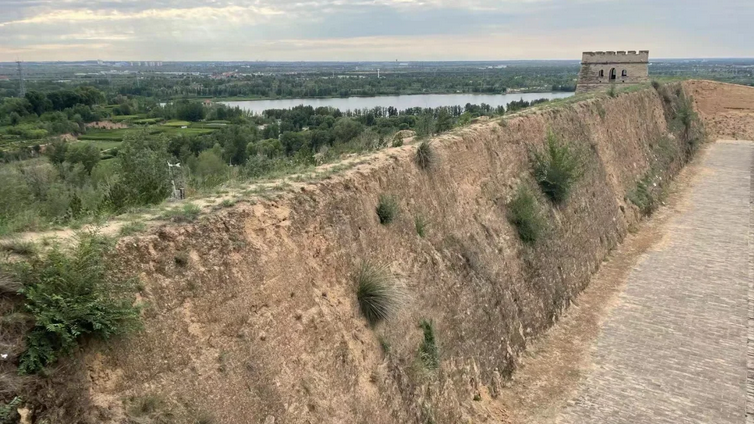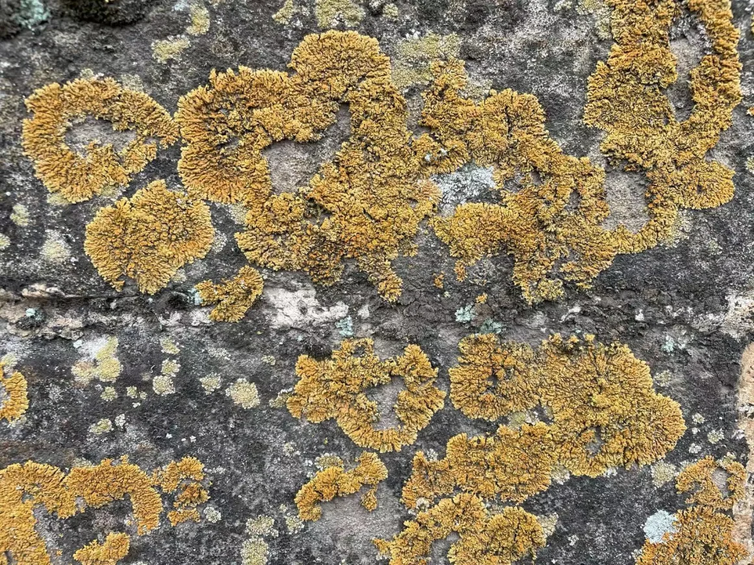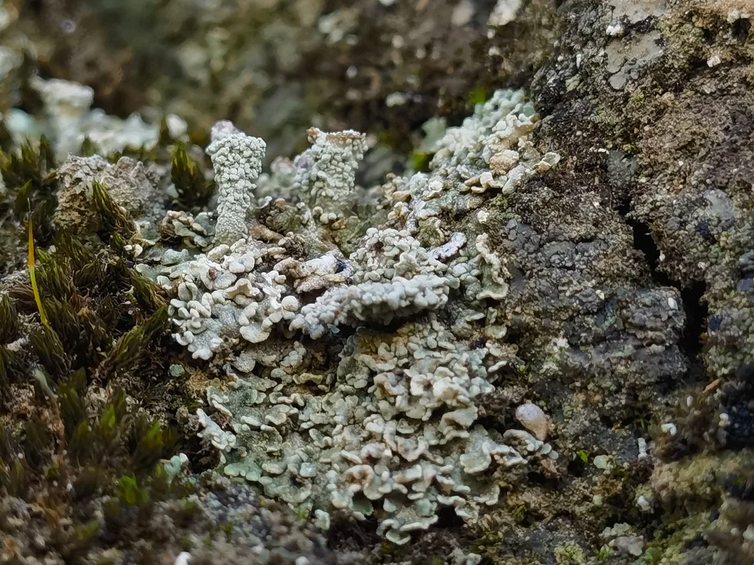Rammed earth portions of the Great Wall of China have been regarded as a weak point in its structure. But these portions of the wall have developed a natural line of defense against deterioration, a new study has found.
 These soil surfaces on the Great Wall are covered by a “living skin” of tiny, rootless plants and microorganisms known as biocrusts, according to soil ecologist Matthew Bowker, a coauthor of the study. “Biocrusts are common throughout the world on soils of dry regions, but we don’t typically look for them on human-built structures.”
These soil surfaces on the Great Wall are covered by a “living skin” of tiny, rootless plants and microorganisms known as biocrusts, according to soil ecologist Matthew Bowker, a coauthor of the study. “Biocrusts are common throughout the world on soils of dry regions, but we don’t typically look for them on human-built structures.”
Lichen and moss biocrusts can be a threat to modern heritage stone structures due to the microbial communities’ long-term impacts on aesthetic value, production of acid and other metabolites, and alteration of microenvironments, which may cause erosion and rock weathering. But the effects of biocrusts look different for earthen landmarks, and communities of cyanobacteria and moss actually increase the Great Wall’s stability and improve its resistance to erosion.
 When the researchers compared the stability and strength of samples layered in biocrust with samples without “Earth’s living skin,” they discovered that samples with biocrusts were as much as three times stronger than those without. “They thought this kind of vegetation was destroying the Great Wall. Our results show the contrary,” said coauthor Bo Xiao. “Biocrusts are very widespread on the Great Wall and their existence is very beneficial to the protection of it. They cover the Great Wall like a blanket that separates the Great Wall from air, from water, from wind.”
When the researchers compared the stability and strength of samples layered in biocrust with samples without “Earth’s living skin,” they discovered that samples with biocrusts were as much as three times stronger than those without. “They thought this kind of vegetation was destroying the Great Wall. Our results show the contrary,” said coauthor Bo Xiao. “Biocrusts are very widespread on the Great Wall and their existence is very beneficial to the protection of it. They cover the Great Wall like a blanket that separates the Great Wall from air, from water, from wind.”
 Made up of components such as cyanobacteria, algae, moss, fungi and lichen, biocrusts dwell on the topsoil of drylands. Covering an estimated 12% of the planet’s surface, the communities of tiny plants and microorganisms can take decades, or longer, to develop. They can increase water retention and regulate nitrogen and carbon fixation. The secretions and structural layers of biocrusts also intertwine to form a “sticky network” of aggregating soil particles that promote strength and stability against corrosive forces threatening the Great Wall.
Made up of components such as cyanobacteria, algae, moss, fungi and lichen, biocrusts dwell on the topsoil of drylands. Covering an estimated 12% of the planet’s surface, the communities of tiny plants and microorganisms can take decades, or longer, to develop. They can increase water retention and regulate nitrogen and carbon fixation. The secretions and structural layers of biocrusts also intertwine to form a “sticky network” of aggregating soil particles that promote strength and stability against corrosive forces threatening the Great Wall.
The study’s authors also say their work makes a case for exploring the possibility of cultivating biocrusts for preservation of other rammed earth heritage sites worldwide.
You can read the original article at edition.cnn.com

